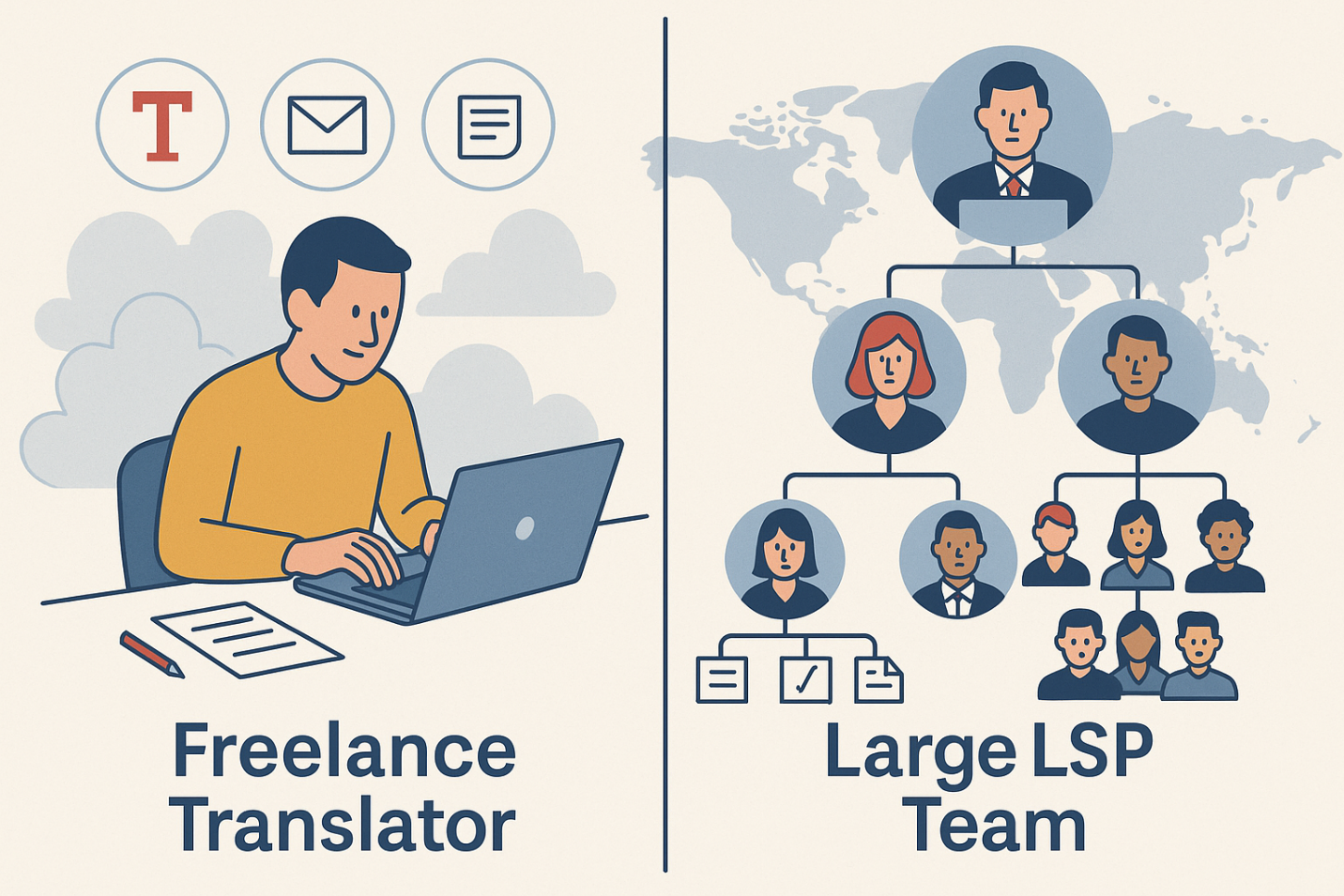
There is a little-spoken but all-pervasive claim that says a business can only be successful if it is built on the most up-to-date technologies. In particular, managers of translation companies are always hearing that to do translations you need CAT tools, to organize your working processes you need a management system, to attract customers you need CRM systems, and so on. This is all so self-explanatory it doesn’t even get talked about — it is automatically assumed to be true.
Let’s think about whether it really is so important. To begin with, let’s look at an analogy from a more “physical” field.
The developers of Formula 1 race cars are constantly perfecting the car’s design, working to give the driver an extra few milliseconds’ advantage on the race track. The developers use the most experienced engineers. The prize goes to the team whose car finishes first.
But all the engineers’ efforts will be for nothing if anything happens to the driver. If he suddenly gets sick or injured, or simply refuses to drive the car, and the team management cannot find a suitable replacement, the team is never going to take a prize-winning place, however efficient the mechanical innovations.
WHAT, HOW & WHICH
This logic works for all businesses, including translation businesses. The most important asset of any company is not its race cars or its tools or its computers: it is the people, and the interactions between them. Technology is just a secondary, supplementary factor, a means of facilitating those interactions.
From this it follows that for a team or a company to be effective, the first thing it must do is to work out the processes of interaction that take place within it and only then to “hang” software on them, that will help facilitate those processes. Trying to work the other way round is bad practice.
At the most general level, management should be structured according to WHAT, HOW & WHICH. First you have to decide WHAT you need to do, then HOW to do it, and only then WHICH resources you can use to do it. For a translation agency, a translation management system is the answer to the question of “WHICH”.
But no software can help a company whose managers don’t care about its reputation. If a manager is unable to choose translators for a project, monitor the quality of their work and get the translation to the client on time and in the required format, this is a consequence of failures at the “WHAT” stage, not the “WHICH”.
If a manager makes mistakes without a system, installing one is not going to reduce — and may even increase — their frequency: it will only help him take on more projects and therefore make even more mistakes.
If the client gets a translation behind schedule, of poor quality or in the wrong format, the fact that you have a great CAT tool and a state of the art translation management system isn’t going to make him feel any better. What difference does it make if you’re driving a race car or an old wreck if you never make it to the finish line?
Two agencies
Imagine there are two managers of two new translation agencies. The first spends a lot of time choosing staff and properly training them in dealing with clients, time management and quality control, but they do all their translations in standard Word docs, and the accounts are managed on an Excel spreadsheet. The second hurriedly puts together a team of people without making any effort to rally them all together, but buys new software and forces them to learn it.
Obviously, both agencies have their flaws. The first needs to overcome its technical deficiencies, and the second to properly set out the “rules of the game” and put together an effective team. Who do you think is going to win this contest? Most likely, if the first agency can sort out all those technical issues it will forge ahead, while the second will wallow in company politics and customer grievances.
Another example, this time a historical one: when the era of great geographical discoveries began, England, Spain and France had no better technology than China or Turkey, for example, but unlike them they managed to establish multiple colonies in the New World. Their success was in large part down to the “top management” of those countries thinking outside the box. This transformation in consciousness among European colonizers happened a long time before technology came along.
Conclusion
You cannot think of technology as a magic wand that you can wave to solve all the problems of your translation agency in an instant. No company has ever become successful purely thanks to technology.
As we have already said, the most important assets of any company are the people and the working processes. So the critical conditions for creating a successful company are choosing the right people and developing the right processes. If these conditions are met, the right people will pick the right tools themselves that will then help them to work as efficiently as possible within those right processes.

.png)



